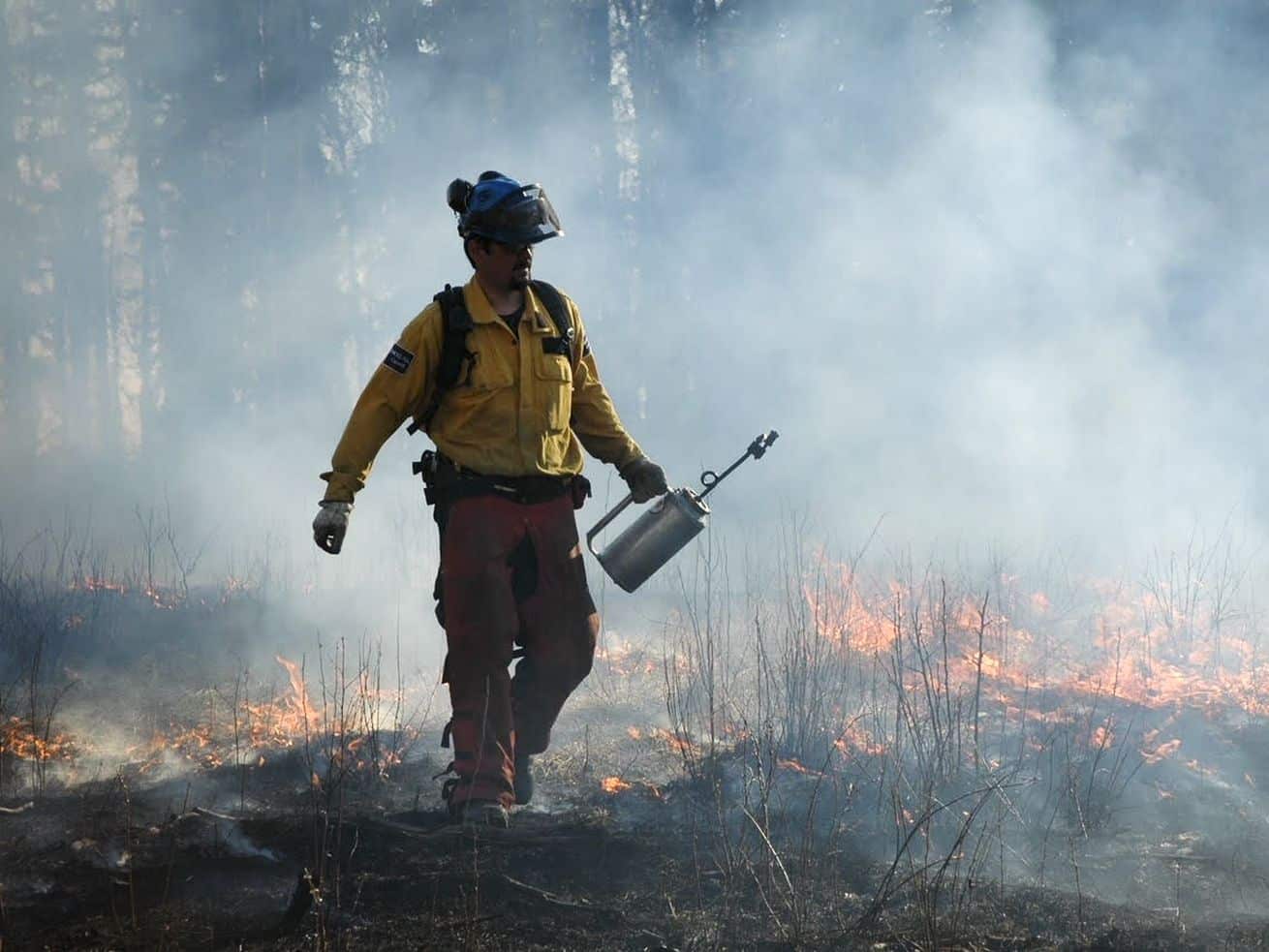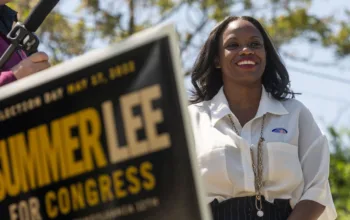First Nations bring generations of knowledge to the fight against climate-fueled blazes.
This story is part of Down to Earth, a Vox reporting initiative on the science, politics, and economics of the biodiversity crisis.
It’s not yet August and wildfires are already tearing through North America. In Oregon, the Bootleg Fire has scorched almost 400,000 hectares — big enough that it created its own weather system. In British Columbia, meanwhile, officials declared a state of emergency in July as nearly 300 wildfires prompted evacuations across the province. Wildfires in BC have burned more than three times the area that has usually burned by this time of year, based on a decade of data.
In his 25-year career as a firefighter in Canada, Brady Highway has never seen anything like this summer. The fire season starts earlier now and is more severe, he said, thanks to climate change and decades of fire suppression. “Polar bears used to be considered the indicator of climate change. Now, the real obvious one to me is forest fires,” he told Vox.
A member of the Peter Ballantyne Cree Nation in Saskatchewan, Highway is part of a large force of First Nations firefighters across the country. Many Indigenous lands contain forests and are on the front lines of wildfires, he said, and members feel a sense of responsibility for the land.
“Most of the folks that work for me who are First Nation don’t really look at this as a job,” said Chad Thomas, the CEO of Yukon First Nations Wildfire, the largest firefighting contractor in Yukon, which employs dozens of First Nations firefighters. “They look at this as a calling.”
Indigenous people in North America are especially adept at managing wildfires, both through prescribed burning and fighting the fires themselves, given their knowledge of the land and generations of experience. Yet their contributions are sometimes overlooked. “First Nations crews do not get the credit they deserve in fire management in Canada,” Amy Christianson, a scientist with Canada’s forest service, recently wrote on Twitter.
First Nations crews do not get the credit they deserve in fire management in Canada. Look at this hotspot map. They’ve literally stopped the fire at the #Skeetchestn reserve boundary. pic.twitter.com/qUHZW1zDWt
— Amy Christianson (@ChristiansonAmy) July 5, 2021
Thomas and Highway told Vox that experienced Indigenous firefighters can have trouble rising through the ranks or earning respect from their non-Indigenous peers. That frustration is shared by some US Indigenous firefighters as well: John Tayaba, director of the fire department for the Shingle Springs Band of Miwok Indians in Northern California, said his crew of 24 sometimes feels relegated to “the back of the bus,” behind government agencies, when it comes to fighting fires in the state. Even if he and his crew are closest to a wildfire, for example, they’ll often have to wait for the state resources to arrive first, he said.
Highway, a project manager at the Indigenous Leadership Initiative, spoke with Vox about elevating Indigenous firefighting and building the next generation of First Nations firefighters. Our conversation has been edited for length and clarity.
Wildfires this year are already “off the charts”
Benji Jones
How long have you been a firefighter?
Brady Highway
I started when I was 15 years old, in 1994. I’ve been doing fire management in some capacity ever since. I’ve been involved in fighting around 250 wildland fires.
Benji Jones
How did you get into it?
Brady Highway
When I was a kid, we were up on our traditional land, and there was a fire that started by the lake that threatened our camp. We were told to evacuate, but my dad and I decided to stick around and do whatever we could. In those days, you learned the trade by actually doing the work. We spent most of the summer on that fire, and we were able to save our camp.
What ultimately got me into the industry was a sense of responsibility for the land. It’s a core value to our people to look after past and future generations.
Benji Jones
How bad are the fires this year?
Brady Highway
They’re off the charts. We’ve already surpassed the number of fires we’ve experienced in previous years in Canada. British Columbia just initiated a state of emergency, and I suspect Saskatchewan and Ontario will do the same in a couple of weeks. This is certainly unprecedented in my career in firefighting.
When I first started fighting fires there was a very defined fire season — mostly July and August. Now, these events are happening in early spring, which catches a lot of agencies by surprise. It’s tied to human-induced climate change. There’s also been fire suppression and an over-accumulation of fuels across the landscape.
Indigenous communities are really on the front lines of this. Our communities are remote and isolated. These are areas that have been passed down from generation to generation, and there’s a strong cultural tie — and an individual tie — to those lands. We feel a sense of responsibility to care for them into the future.
/cdn.vox-cdn.com/uploads/chorus_asset/file/22733104/GettyImages_1233783820.jpg) James MacDonald/Bloomberg via Getty Images
James MacDonald/Bloomberg via Getty ImagesThe role of Indigenous firefighters
Benji Jones
Before European settlers arrived, Indigenous people had been doing prescribed burns for thousands of years, which helps to limit intense wildfires, as my colleague Umair Irfan has written. What role do First Nations people play in firefighting today?
Brady Highway
The vast majority of initial wildfire attack crews in Saskatchewan are Indigenous. These people are highly respected in their communities and role models for children.
It’s also an accessible job. You can get hired into an entry-level position quickly based on skills that you develop on the land.
Benji Jones
Fire is obviously an important part of Indigenous culture. Is there traditional knowledge in firefighting itself?
Brady Highway
For one, there’s the idea of accountability for generations to come. There are also more pragmatic benefits of having Indigenous knowledge on a crew. First Nations people know how to get around on their land — they don’t need a map, they don’t need a compass. They know exactly where traditional cultural sites are, the ones that are important to save. They can get there at night, so they can get there through the smoke. When helicopters can’t fly, they can still drive boats. There’s still a lot of things that Indigenous people can do that will require an awful lot of training for non-Indigenous people.
“Passed over for promotion”
Benji Jones
You’ve said before that Indigenous firefighters are overlooked. What do you mean by that?
Brady Highway
We’ve been trying to get First Nations more involved in fighting wildfires for a number of years.
Often when First Nations crews get involved they’re just contract crews — considered nothing more than your boots-on-the-ground, put-water-on-fire resource. That doesn’t allow for First Nations to become involved in the decision-making process. It’s not that First Nations are trying to take over wildfire management, but we should be collaborating when the stakes are so high. There’s an emergency, we should all be contributing.
/cdn.vox-cdn.com/uploads/chorus_asset/file/22733118/GettyImages_1233795259.jpg) James MacDonald/Bloomberg via Getty Images
James MacDonald/Bloomberg via Getty ImagesFirst Nations firefighters also tend to get stuck at entry-level positions. Even with 25 years of experience, I wasn’t able to enter management. I know a lot of other fire crew leaders that have been passed over for promotion. I’m not sure if it’s favoritism or racism.
It’s now much harder to become a firefighter, and it requires more resources. Decades of experience are being overlooked for people who might have some book education or sat in on a one- or two-week training course, and now they are the certified resources that the provinces really depend on.
Building the next generation of First Nations firefighters
Benji Jones
Are you hoping to build out the arsenal of Indigenous firefighters? What does that look like?
Brady Highway
I work for the Indigenous Leadership Initiative. We’re an advocate for Indigenous-led conservation, which includes supporting a network of Indigenous guardians — individuals across Canada who do community-based environmental monitoring [among other things].
Our goal is to give some of these guardians the tools to fight fires. We see this as a very significant way that the guardians can make an impact on climate change and the things that are threatening Indigenous communities.
Supporting our youth and elders as we try to improve our lives and protect our livelihoods is the most important thing for me. This work is going to continue. This is not going to be the last fire season that will challenge us.
Author: Benji Jones
Read More



